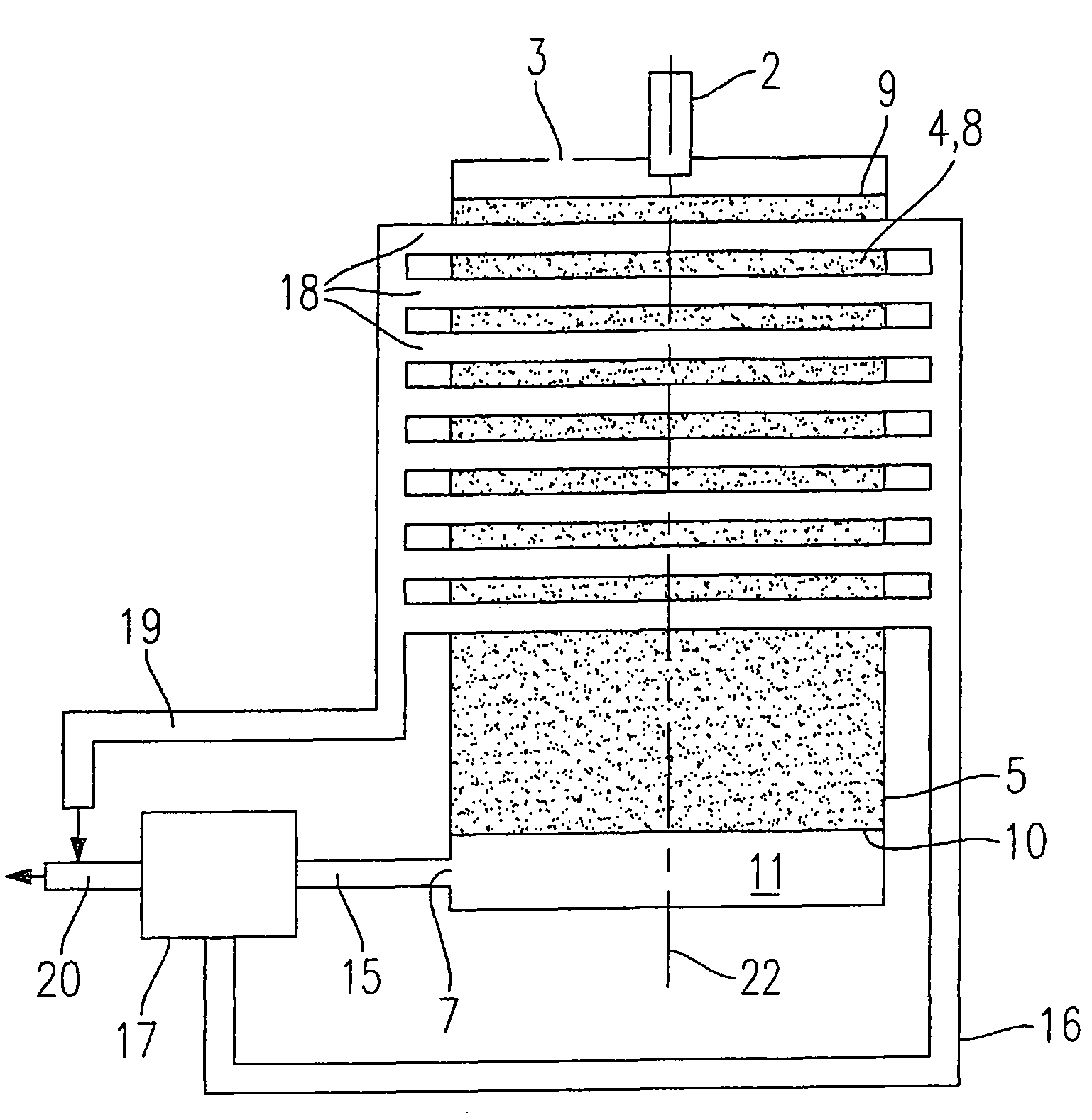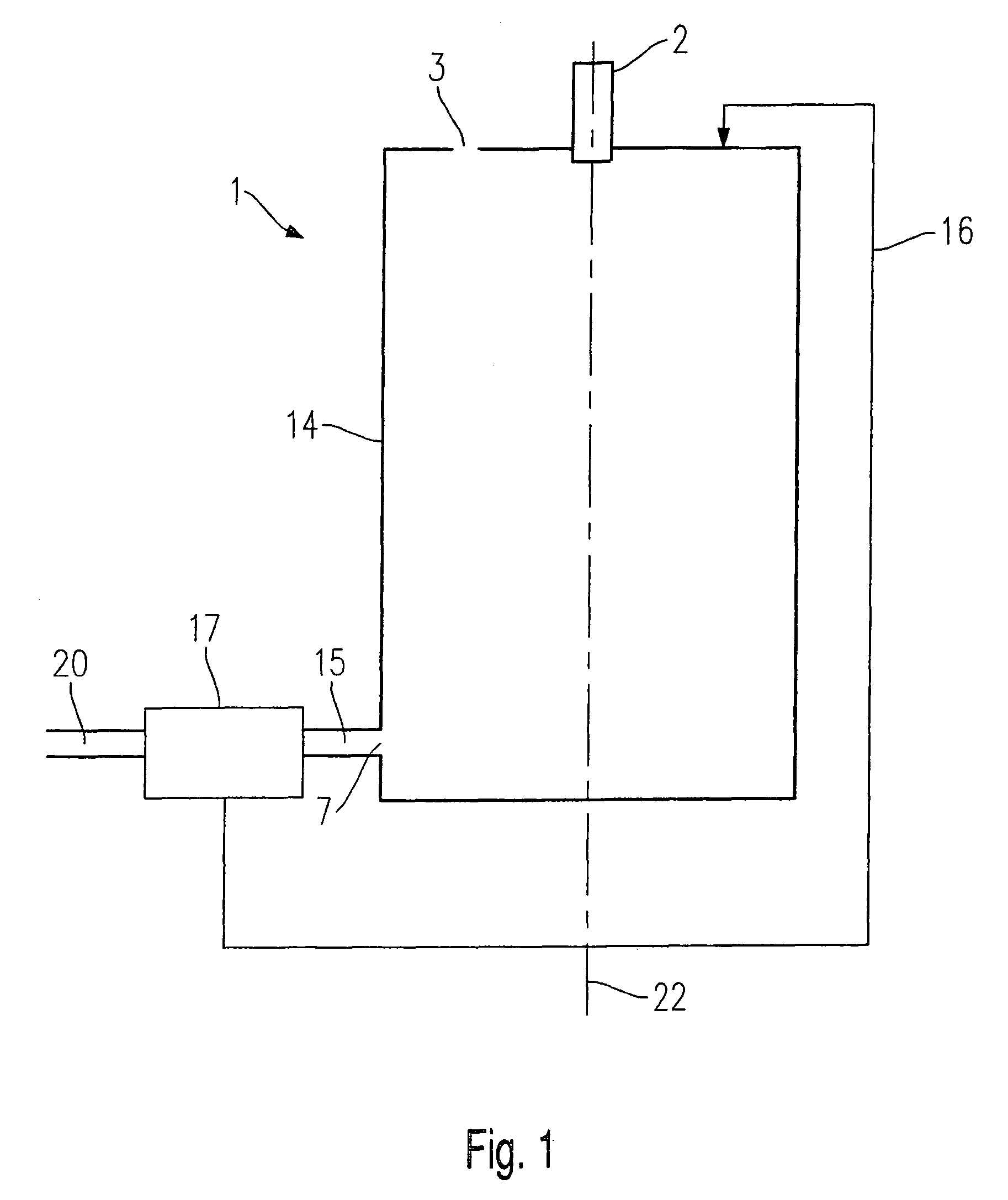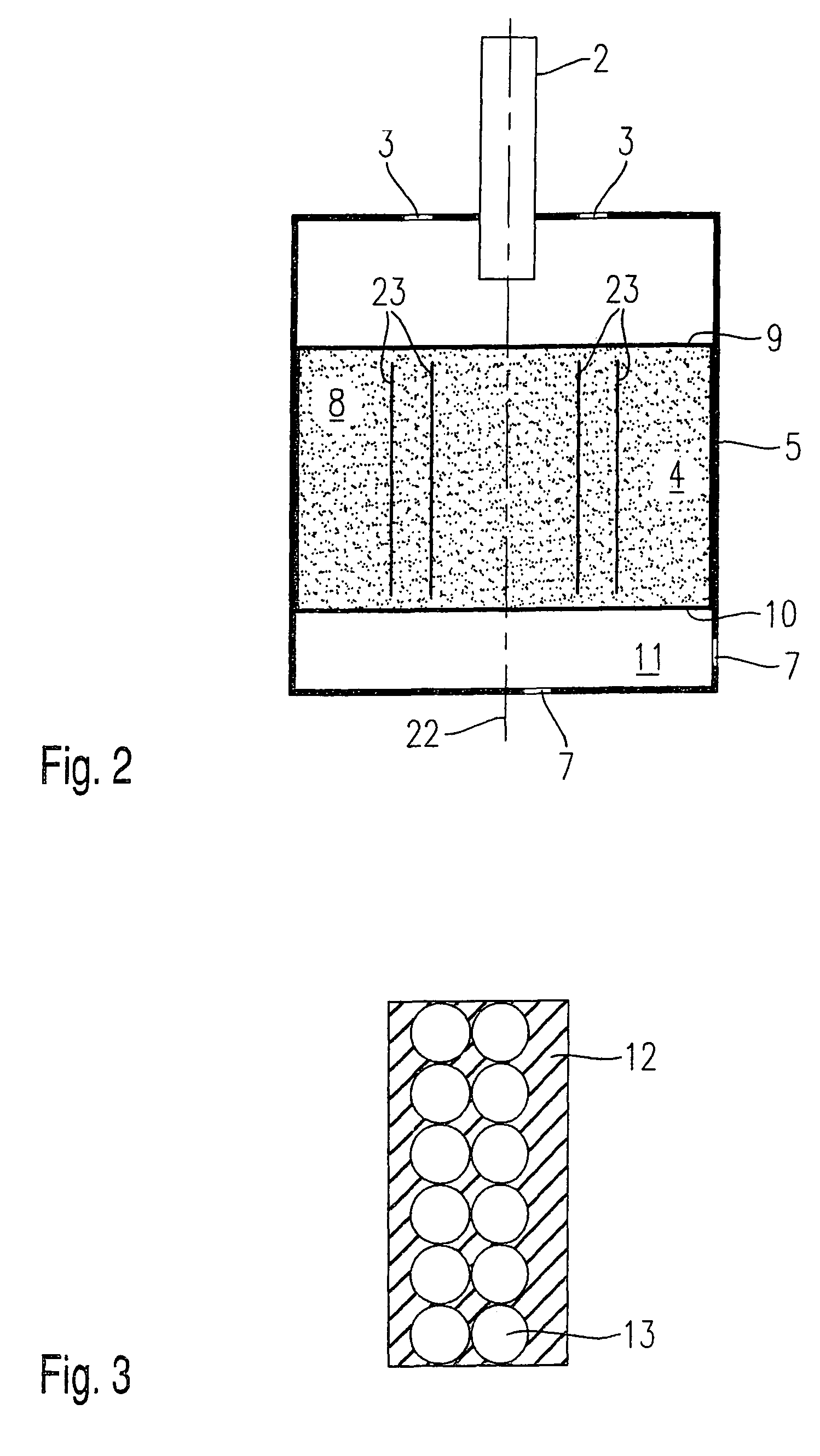Afterburner device and method for operating an afterburner device
a technology of afterburner and afterburner, which is applied in the direction of combustion types, lighting and heating apparatus, furnaces, etc., can solve the problems of large number of cold start phases, chemical reformer not working optimally, etc., to achieve good heat conductive contact, high degree of open porosity, and speed of reaction speed
- Summary
- Abstract
- Description
- Claims
- Application Information
AI Technical Summary
Benefits of technology
Problems solved by technology
Method used
Image
Examples
Embodiment Construction
[0033]In the following, exemplary embodiments of the present invention are described by way of example. The example method according to the present invention is particularly advantageously used on these exemplary embodiments. Identical parts are provided with the same reference numerals in all the figures. The arrows represent the respective fuel and gas flows.
[0034]FIG. 1 shows an exemplary embodiment of an afterburner device 1 according to the present invention. The afterburner device has a cylindrical tubular second housing 14 closed at the ends, a nozzle 2, a controller 17 and a recirculating line 16. Nozzle 2 penetrates into the top end face of second housing 14, and is positioned axially centrically to an axis 22, which in this exemplary embodiment is identical to the axis of symmetry of second housing 14. The top end face of second housing 14 also has an air supply 3 which, in this exemplary embodiment, is implemented as just an opening. At the side, close to the lower end of...
PUM
| Property | Measurement | Unit |
|---|---|---|
| pore size | aaaaa | aaaaa |
| speed | aaaaa | aaaaa |
| speed of combustion | aaaaa | aaaaa |
Abstract
Description
Claims
Application Information
 Login to View More
Login to View More - R&D
- Intellectual Property
- Life Sciences
- Materials
- Tech Scout
- Unparalleled Data Quality
- Higher Quality Content
- 60% Fewer Hallucinations
Browse by: Latest US Patents, China's latest patents, Technical Efficacy Thesaurus, Application Domain, Technology Topic, Popular Technical Reports.
© 2025 PatSnap. All rights reserved.Legal|Privacy policy|Modern Slavery Act Transparency Statement|Sitemap|About US| Contact US: help@patsnap.com



